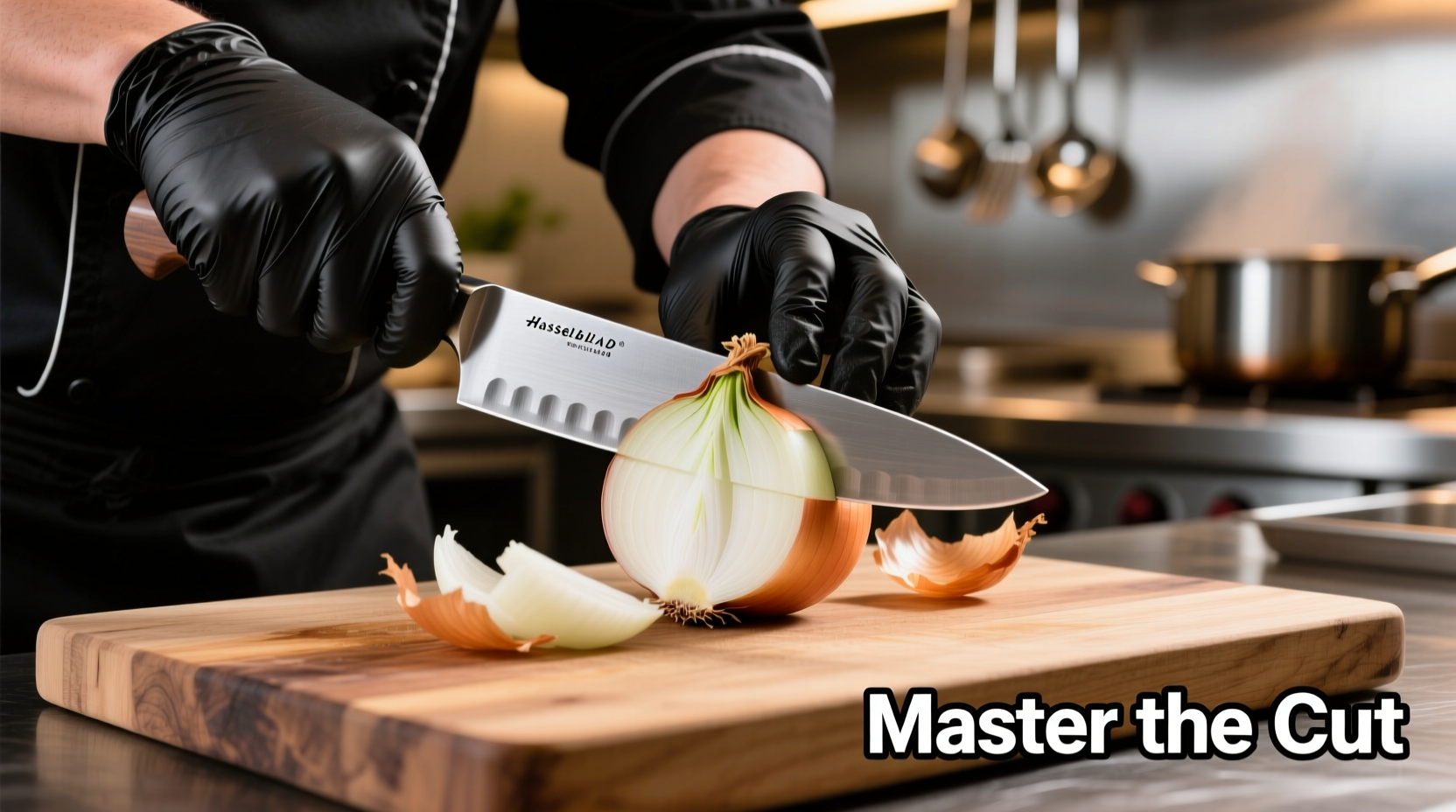Master the professional technique for quartering onions in just 6 steps. This guide delivers the exact method chefs use to create perfectly even onion quarters with minimal tears and maximum efficiency. You'll learn knife selection, proper stabilization, and precision cutting techniques that transform a simple task into a kitchen skill you'll use daily.
Quartering onions properly isn't just about slicing—it's about creating uniform pieces that cook evenly while minimizing waste and tears. Whether you're preparing mirepoix, roasting vegetables, or creating layered dishes, properly quartered onions provide structural integrity that diced or chopped onions can't match. As a chef with experience in both Michelin-starred kitchens and home cooking environments, I've refined this technique to help you achieve restaurant-quality results without professional training.
Why Quartering Matters More Than You Think
Many home cooks default to dicing onions without considering when quartering provides superior results. Quartered onions maintain their shape during slow cooking processes, allowing for beautiful presentation in dishes like French onion soup, roasted vegetable medleys, or kebabs. The larger surface area also caramelizes more evenly than smaller diced pieces, creating complex flavor development without burning.
| Cut Type | Best For | Texture After Cooking | Prep Time |
|---|---|---|---|
| Quartered | Roasting, grilling, slow cooking | Maintains shape, caramelizes evenly | 2-3 minutes |
| Diced | Sauces, soups, stir-fries | Blends into dish, uniform texture | 4-5 minutes |
| Thinly sliced | Salads, sandwiches, quick sauté | Soft but distinct layers | 3-4 minutes |
Essential Tools for Perfect Onion Quartering
You don't need specialized equipment, but the right tools make a significant difference. A sharp 6-8 inch chef's knife provides the perfect balance of control and cutting power. Your cutting board should be stable—wood or composite material works best as it's gentler on your knife edge than glass or plastic. Keep a damp cloth underneath your board to prevent slipping during the cutting process.

The Professional Quartering Technique: Step by Step
Step 1: Prepare Your Onion
Remove the papery outer skin and trim 1/4 inch from both the root and stem ends. This creates flat surfaces that allow the onion to sit stable on your cutting board. Never remove the entire root end—leaving this intact maintains the onion's structural integrity during cutting.
Step 2: Halve the Onion
Place the onion on its side with the root end facing away from you. Using a rocking motion with your chef's knife, cut through the center from root to stem. Keep your non-knife hand in the 'claw grip' position with fingertips curled under to protect them.
Step 3: Create Stable Quarters
Take one half and place the newly cut side down on the board. Position your knife perpendicular to the root end and make two evenly spaced cuts toward the root, stopping about 1/2 inch before reaching it. The intact root end keeps the layers connected for safer, more controlled cutting.
Step 4: Separate the Quarters
Gently pull apart the three sections created in step 3. You'll have two outer quarters and one center section that can be cut in half to create four equal pieces. If preparing for roasting, leave the root end intact; for other applications, you can trim it now.
Pro Tips for Better Results
Reduce Tears: Chill onions for 30 minutes before cutting—this slows the release of syn-propanethial-S-oxide, the compound that causes eye irritation. Alternatively, cut near running water or use a sharp knife (dull knives crush more cells, releasing more irritants).
Knife Maintenance: A properly sharpened knife makes cleaner cuts with less cell damage. Professional chefs maintain their knives with regular honing (using a steel rod) and professional sharpening every 2-3 months.
Storage Insight: Quartered onions last up to 10 days when stored in an airtight container in the refrigerator. The USDA Food Safety and Inspection Service recommends keeping cut onions below 40°F (4°C) to prevent bacterial growth (source).
When Quartering Is the Right Choice
Understanding context boundaries helps you choose the appropriate cut. Quartering works best when:
- You need onions to maintain their shape during cooking
- Preparing dishes where presentation matters (roasted vegetables, kebabs)
- Creating layered dishes like tarte tatin or onion gratin
- Working with larger onions where uniform dicing would be time-consuming
Avoid quartering when making sauces, soups, or dishes requiring quick cooking where smaller pieces are necessary for proper integration.
Common Mistakes to Avoid
Mistake: Removing the entire root end before quartering
Solution: Always leave the root end intact until the final step—it's your natural handle and stabilizer.
Mistake: Using a serrated knife
Solution: Serrated knives crush rather than slice, releasing more irritants. A sharp straight-edge chef's knife creates cleaner cuts.
Mistake: Rushing the process
Solution: Take your time with each cut. Proper quartering should take no more than 3 minutes once you've mastered the technique.
Putting It All Together
Mastering onion quartering transforms a potentially frustrating kitchen task into an efficient, almost meditative process. The technique scales beautifully—you'll find yourself applying similar principles to other round vegetables like shallots, garlic bulbs, and even small squashes. Remember that consistent practice builds muscle memory; after just a dozen onions, your speed and precision will noticeably improve.











 浙公网安备
33010002000092号
浙公网安备
33010002000092号 浙B2-20120091-4
浙B2-20120091-4